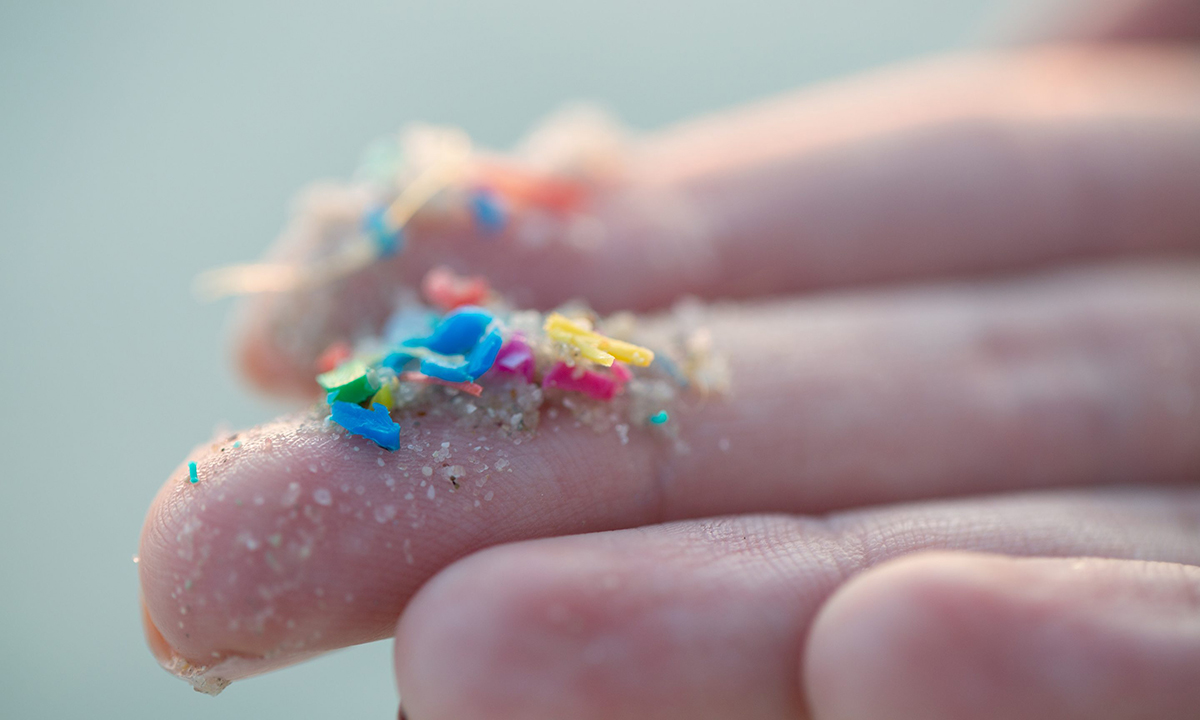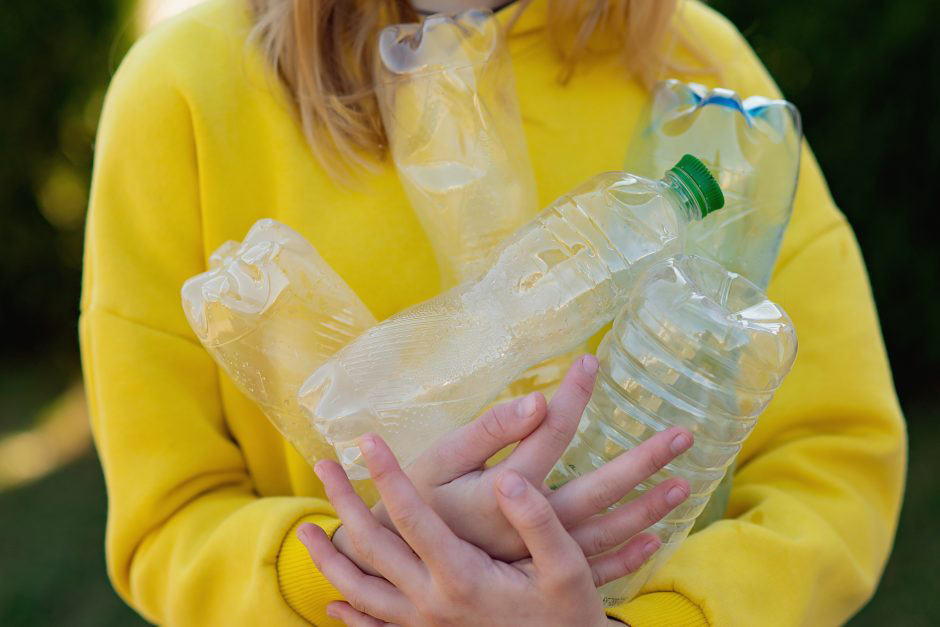
尽管微塑料对地球造成了巨大的破坏,但也许只有对人体构成迫在眉睫的威胁,才能让人们对这一问题给予应有的关注。
研究人员表示,这一时刻已经到来。最近几项关于微塑料[指大量的微小塑料颗粒(直径为5毫米或更小),需要数百年的时间才能降解]的研究表明,它们不仅无处不在,而且正在入侵血液,造成潜在的危害。
这项研究尚未完成,科学技术也在不断进步。尽管如此,该领域的研究人员正在达成共识:微塑料对身体某些功能的威胁是真实存在的,而且这种威胁还在不断增加。
欧洲的微塑料和人类健康研究先驱、独立科学家希瑟·莱斯利说:“我们必须决定如何处理体内有极少量塑料的这一认知。”莱斯利对《财富》杂志表示,虽然潜在危害的程度仍未探明,但“关于微塑料积聚的组织中炎症效应和代谢变化的证据正在增加。”
发表在《自然医学》(Nature Medicine)上的一份新报告暗示了这一问题的严重性。虽然对微塑料生物效应的研究已经长达数十年,但大部分研究都集中在环境方面,尤其是海洋环境。直到最近的研究才在人体的多个器官中检测到这些物质的存在,包括血液、肺、胎盘和粪便,以及母乳、睾丸和精液。
在某些方面,这样的结果不足为奇。塑料制品及垃圾在地球上无处不在。微塑料在食物中,甚至是生鲜水果和蔬菜中普遍存在,而且自来水和瓶装水中也发现了微塑料。美国加州最近成为世界上第一个对其饮用水进行微塑料检测的政府实体,而对从9个国家购买的250多瓶水进行的检测发现,93%的瓶装水含有微塑料。
微塑料是如何危害健康的?
自第二次世界大战(World War II)后的十年间塑料诞生以来,其产量以惊人的速度增长,每年均超过4.3亿吨。其中约有三分之二是为短期使用而设计的(例如水瓶和零食包装),然而塑料的使用寿命却长得惊人(某些产品的使用寿命长达450年到1,000年),而且这种材料在使用过程中会不断降解成越来越小的颗粒。
由此产生的微塑料及其表亲纳米塑料(肉眼看不见)中含有什么?根据最近的研究,塑料工业的各种产品中至少含有16,000种化学物质,其中超过四分之一被认为对人类健康和环境有害。添加的化学物质可能包括致癌物、内分泌干扰物和神经毒剂等剧毒化合物,或影响生殖的化学物质,比如双酚A、邻苯二甲酸盐、双酚以及全氟和多氟烷基物质(PFAS)。
一系列研究已经开始证实这一切对人类造成的伤害。今年3月,《新英格兰医学杂志》(New England Journal of Medicine)发表了一份令人震惊的报告。该报告发现,在接受颈动脉疾病检测的患者中,在动脉内壁斑块中检测出微塑料的患者罹患心脏病、中风或死亡的风险是未检测出微塑料的患者的4.5倍。
微粒物质专家菲利普·德莫克里托说:“这一比例相当高。我们需要进行更多类似的研究,欧洲同行走在了我们前面。在美国,我们通常要等到人们濒临死亡时才进行研究。”

研究微塑料与炎症性肠病(IBD)之间联系的研究人员在人类粪便中检测到15种微塑料,并发现炎症性肠病患者粪便中的微塑料浓度高于健康人群。根据记录,人类肺部的所有部位都存在微塑料,但与人类疾病的直接联系尚未确定。一项研究发现,如果婴儿用聚丙烯瓶喝配方奶粉,他们可能就会接触到更高水平的微塑料,这突出了作者的观点:我们“迫切需要”确定微塑料对婴儿健康可能造成的风险(如果会造成风险的话)。科学家分析了62份胎盘组织样本,在每份样本中都发现了聚乙烯(一种用于制造塑料瓶的塑料)。
据估计,仅在2018年,与塑料化学品有关的健康问题就使美国医疗保健系统损失了2,490亿美元。男性和女性的不育症、癌症、神经发育障碍、心血管疾病和肾脏疾病都与微塑料中含有的化学添加剂有关。纺织厂的塑料生产工人死于肺癌和肺病的比例更高。
微塑料对海洋和水生生物造成的损害已经被广泛报道,但其对人体的威胁尚未明确界定。但是证据正在不断增加——尽管有关这一话题的科学研究仍然很稚嫩,但人类的大脑可能极易受其影响。
两位土耳其科学家在一部名为《塑料人》(Plastic People)的新纪录片里透露,他们在脑肿瘤组织中发现了微塑料,但他们的研究结果尚未发表或经过同行评审。研究人员之一塞达特·冈多杜告诉《财富》杂志:“我们的研究表明,血脑屏障受损,使得微塑料和其他微粒得以通过。”在小鼠体内观察到,“非高剂量”的微粒在暴露三周后就可以穿过这道屏障,并引起行为变化。
吸入和摄入是微塑料进入人体的其他途径。在灰尘、化妆品、海鲜、啤酒、盐、雨水、土壤甚至我们呼吸的空气中都发现了微塑料。德莫克里托称:“我们喝的水、吃的食物都含有微塑料。”
除了自身有害的物理特性外,微塑料还能够吸收其他来源的化学污染物,例如海水里的多氯联苯。研究员雪莉·A·梅森在接受美国频谱新闻网(Spectrum News)采访时,称它们为“小毒丸”, 并指出它们可以吸收水道中已经存在的化学物质,最终累积的毒素“比水里的毒素高出100万倍”。
挪威科技大学(Norwegian University of Science and Technology)的生物学家和环境毒理学家马丁·瓦格纳指出,微塑料一旦进入人体,就会被识别为外来颗粒。它们会引发免疫系统的炎症反应,旨在将其排出体外,就像人体对抗细菌一样——只是微塑料无法被降解。瓦格纳说:“因此,它们会引发慢性炎症。显而易见,对我而言,这是一大重要因素。”包括糖尿病、心血管疾病、癌症和其他疾病在内的多种疾病都与慢性炎症有关,也是全球主要死因。
《浓度高于水:寻求塑料危机的解决方案》(Thicker Than Water: The Quest for Solutions to the Plastic Crisis)一书的作者埃里卡·奇里诺说,在实验室测试中,有证明表明,暴露于微塑料颗粒的人类细胞出现细胞损伤和死亡现象。此外,奇里诺指出,科学家们“正在竞相了解微塑料是否与癌症发病率上升有关,尤其是年轻人罹患的胃肠道系统癌症。”
减少微塑料接触
为荷兰和世界卫生组织(World Health Organization)的政策制定者提供咨询的吸入毒理学家弗莱明·卡西表示,目前还不清楚微塑料在人体中达到何等水平才会带来威胁。卡西说:“我们很想了解这一点。这些物质是否会累积,包括我们已知的某些物质如果在体内达到一定量,会产生不良影响。”
到目前为止,这些关键问题还没有确切的答案。然而,对于那些研究微塑料多年或数十年的人来说,新出现的证据普遍指向了一个方向——除非采取更激进、更全面的行动,否则它将继续朝着这个方向发展。
奇里诺表示,由于99%的塑料都是由化石燃料制成的,因此只有严格限制塑料生产,同时对塑料和化石燃料行业实施更为严格的监管,才有可能起到作用。塑料工业协会(The Plastics Industry Association)没有回应《财富》杂志的置评请求。
奇里诺称:“最终逐步淘汰塑料和化石燃料是控制塑料污染的唯一途径。如果浴缸溢水,你不会直接开始拖地。首先,你会关闭水龙头。”
4月下旬,瓦格纳参加了在加拿大渥太华举行的联合国全球塑料峰会,他是“有效塑料条约科学家联盟”(Scientists’ Coalition for an Effective Plastics Treaty)的成员。峰会的目标是制定一项具有法律约束力的条约,以遏制全球塑料污染。
峰会的与会者并不孤单。据路透社(Reuters)报道,近200名化石燃料和化工行业的游说者也登记参加了此次会议,这一比例比2023年11月的联合国会议增加了近40%。
瓦格纳对《财富》杂志表示:“我们取得了一些进展。但是,石油生产国聚集在一起,我们称之为低雄心联盟,目的是拖延谈判,减轻条约推行力度。”
与此同时,人们可能希望尽可能减少自己接触微塑料的机会。专家表示,在大多数情况下,这需要从小事做起。把塑料水瓶换成玻璃或钢制水瓶是其中一个步骤,在微波炉中只使用玻璃或陶瓷容器来加热食物也是其中一个步骤(加热会导致塑料释放有害化学物质)。瓦格纳称,打扫房子也大有裨益。“我知道人们不喜欢这样做,但这确实有助于清除灰尘,包括所有的微纳米塑料。”一些专家建议采取更强有力的措施:用木地板取代含有塑料纤维的地毯,或者选择只由天然纤维制成的衣服。
当然,这一切都不是新动态。但是,越来越多的证据表明,微塑料存在于人体内,并可能带来各种健康问题,会让人们对这一话题产生新的紧迫感。瓦格纳说:“还是有希望的,而且总会有希望的。”(财富中文网)
译者:中慧言-王芳
尽管微塑料对地球造成了巨大的破坏,但也许只有对人体构成迫在眉睫的威胁,才能让人们对这一问题给予应有的关注。
研究人员表示,这一时刻已经到来。最近几项关于微塑料[指大量的微小塑料颗粒(直径为5毫米或更小),需要数百年的时间才能降解]的研究表明,它们不仅无处不在,而且正在入侵血液,造成潜在的危害。
这项研究尚未完成,科学技术也在不断进步。尽管如此,该领域的研究人员正在达成共识:微塑料对身体某些功能的威胁是真实存在的,而且这种威胁还在不断增加。
欧洲的微塑料和人类健康研究先驱、独立科学家希瑟·莱斯利说:“我们必须决定如何处理体内有极少量塑料的这一认知。”莱斯利对《财富》杂志表示,虽然潜在危害的程度仍未探明,但“关于微塑料积聚的组织中炎症效应和代谢变化的证据正在增加。”
发表在《自然医学》(Nature Medicine)上的一份新报告暗示了这一问题的严重性。虽然对微塑料生物效应的研究已经长达数十年,但大部分研究都集中在环境方面,尤其是海洋环境。直到最近的研究才在人体的多个器官中检测到这些物质的存在,包括血液、肺、胎盘和粪便,以及母乳、睾丸和精液。
在某些方面,这样的结果不足为奇。塑料制品及垃圾在地球上无处不在。微塑料在食物中,甚至是生鲜水果和蔬菜中普遍存在,而且自来水和瓶装水中也发现了微塑料。美国加州最近成为世界上第一个对其饮用水进行微塑料检测的政府实体,而对从9个国家购买的250多瓶水进行的检测发现,93%的瓶装水含有微塑料。
微塑料是如何危害健康的?
自第二次世界大战(World War II)后的十年间塑料诞生以来,其产量以惊人的速度增长,每年均超过4.3亿吨。其中约有三分之二是为短期使用而设计的(例如水瓶和零食包装),然而塑料的使用寿命却长得惊人(某些产品的使用寿命长达450年到1,000年),而且这种材料在使用过程中会不断降解成越来越小的颗粒。
由此产生的微塑料及其表亲纳米塑料(肉眼看不见)中含有什么?根据最近的研究,塑料工业的各种产品中至少含有16,000种化学物质,其中超过四分之一被认为对人类健康和环境有害。添加的化学物质可能包括致癌物、内分泌干扰物和神经毒剂等剧毒化合物,或影响生殖的化学物质,比如双酚A、邻苯二甲酸盐、双酚以及全氟和多氟烷基物质(PFAS)。
一系列研究已经开始证实这一切对人类造成的伤害。今年3月,《新英格兰医学杂志》(New England Journal of Medicine)发表了一份令人震惊的报告。该报告发现,在接受颈动脉疾病检测的患者中,在动脉内壁斑块中检测出微塑料的患者罹患心脏病、中风或死亡的风险是未检测出微塑料的患者的4.5倍。
微粒物质专家菲利普·德莫克里托说:“这一比例相当高。我们需要进行更多类似的研究,欧洲同行走在了我们前面。在美国,我们通常要等到人们濒临死亡时才进行研究。”
研究微塑料与炎症性肠病(IBD)之间联系的研究人员在人类粪便中检测到15种微塑料,并发现炎症性肠病患者粪便中的微塑料浓度高于健康人群。根据记录,人类肺部的所有部位都存在微塑料,但与人类疾病的直接联系尚未确定。一项研究发现,如果婴儿用聚丙烯瓶喝配方奶粉,他们可能就会接触到更高水平的微塑料,这突出了作者的观点:我们“迫切需要”确定微塑料对婴儿健康可能造成的风险(如果会造成风险的话)。科学家分析了62份胎盘组织样本,在每份样本中都发现了聚乙烯(一种用于制造塑料瓶的塑料)。
据估计,仅在2018年,与塑料化学品有关的健康问题就使美国医疗保健系统损失了2,490亿美元。男性和女性的不育症、癌症、神经发育障碍、心血管疾病和肾脏疾病都与微塑料中含有的化学添加剂有关。纺织厂的塑料生产工人死于肺癌和肺病的比例更高。
微塑料对海洋和水生生物造成的损害已经被广泛报道,但其对人体的威胁尚未明确界定。但是证据正在不断增加——尽管有关这一话题的科学研究仍然很稚嫩,但人类的大脑可能极易受其影响。
两位土耳其科学家在一部名为《塑料人》(Plastic People)的新纪录片里透露,他们在脑肿瘤组织中发现了微塑料,但他们的研究结果尚未发表或经过同行评审。研究人员之一塞达特·冈多杜告诉《财富》杂志:“我们的研究表明,血脑屏障受损,使得微塑料和其他微粒得以通过。”在小鼠体内观察到,“非高剂量”的微粒在暴露三周后就可以穿过这道屏障,并引起行为变化。
吸入和摄入是微塑料进入人体的其他途径。在灰尘、化妆品、海鲜、啤酒、盐、雨水、土壤甚至我们呼吸的空气中都发现了微塑料。德莫克里托称:“我们喝的水、吃的食物都含有微塑料。”
除了自身有害的物理特性外,微塑料还能够吸收其他来源的化学污染物,例如海水里的多氯联苯。研究员雪莉·A·梅森在接受美国频谱新闻网(Spectrum News)采访时,称它们为“小毒丸”, 并指出它们可以吸收水道中已经存在的化学物质,最终累积的毒素“比水里的毒素高出100万倍”。
挪威科技大学(Norwegian University of Science and Technology)的生物学家和环境毒理学家马丁·瓦格纳指出,微塑料一旦进入人体,就会被识别为外来颗粒。它们会引发免疫系统的炎症反应,旨在将其排出体外,就像人体对抗细菌一样——只是微塑料无法被降解。瓦格纳说:“因此,它们会引发慢性炎症。显而易见,对我而言,这是一大重要因素。”包括糖尿病、心血管疾病、癌症和其他疾病在内的多种疾病都与慢性炎症有关,也是全球主要死因。
《浓度高于水:寻求塑料危机的解决方案》(Thicker Than Water: The Quest for Solutions to the Plastic Crisis)一书的作者埃里卡·奇里诺说,在实验室测试中,有证明表明,暴露于微塑料颗粒的人类细胞出现细胞损伤和死亡现象。此外,奇里诺指出,科学家们“正在竞相了解微塑料是否与癌症发病率上升有关,尤其是年轻人罹患的胃肠道系统癌症。”
减少微塑料接触
为荷兰和世界卫生组织(World Health Organization)的政策制定者提供咨询的吸入毒理学家弗莱明·卡西表示,目前还不清楚微塑料在人体中达到何等水平才会带来威胁。卡西说:“我们很想了解这一点。这些物质是否会累积,包括我们已知的某些物质如果在体内达到一定量,会产生不良影响。”
到目前为止,这些关键问题还没有确切的答案。然而,对于那些研究微塑料多年或数十年的人来说,新出现的证据普遍指向了一个方向——除非采取更激进、更全面的行动,否则它将继续朝着这个方向发展。
奇里诺表示,由于99%的塑料都是由化石燃料制成的,因此只有严格限制塑料生产,同时对塑料和化石燃料行业实施更为严格的监管,才有可能起到作用。塑料工业协会(The Plastics Industry Association)没有回应《财富》杂志的置评请求。
奇里诺称:“最终逐步淘汰塑料和化石燃料是控制塑料污染的唯一途径。如果浴缸溢水,你不会直接开始拖地。首先,你会关闭水龙头。”
4月下旬,瓦格纳参加了在加拿大渥太华举行的联合国全球塑料峰会,他是“有效塑料条约科学家联盟”(Scientists’ Coalition for an Effective Plastics Treaty)的成员。峰会的目标是制定一项具有法律约束力的条约,以遏制全球塑料污染。
峰会的与会者并不孤单。据路透社(Reuters)报道,近200名化石燃料和化工行业的游说者也登记参加了此次会议,这一比例比2023年11月的联合国会议增加了近40%。
瓦格纳对《财富》杂志表示:“我们取得了一些进展。但是,石油生产国聚集在一起,我们称之为低雄心联盟,目的是拖延谈判,减轻条约推行力度。”
与此同时,人们可能希望尽可能减少自己接触微塑料的机会。专家表示,在大多数情况下,这需要从小事做起。把塑料水瓶换成玻璃或钢制水瓶是其中一个步骤,在微波炉中只使用玻璃或陶瓷容器来加热食物也是其中一个步骤(加热会导致塑料释放有害化学物质)。瓦格纳称,打扫房子也大有裨益。“我知道人们不喜欢这样做,但这确实有助于清除灰尘,包括所有的微纳米塑料。”一些专家建议采取更强有力的措施:用木地板取代含有塑料纤维的地毯,或者选择只由天然纤维制成的衣服。
当然,这一切都不是新动态。但是,越来越多的证据表明,微塑料存在于人体内,并可能带来各种健康问题,会让人们对这一话题产生新的紧迫感。瓦格纳说:“还是有希望的,而且总会有希望的。”(财富中文网)
译者:中慧言-王芳
For all the damage that microplastics are doing to the planet, it may be that only an impending threat to the human body will direct the kind of attention to the issue that it has long deserved.
That moment, researchers say, is here. Several recent studies into microplastics, the voluminous and tiny (think 5mm or smaller) bits of material that can take hundreds of years to degrade, suggest not only that they are everywhere, but that they’re making their way into our bloodstreams–with potentially hazardous results.
The research isn’t nearly complete, and the science is evolving. Still, a consensus is forming among those in the field: The threat of microplastics to some of our body functions is real, and it is growing.
“We humans have to decide what to do with the knowledge that we are a little bit plastic inside,” says Heather Leslie, an independent scientist who pioneered microplastics and human health research in Europe. While the extent of the potential damage is still unexplored territory, Leslie tells Fortune, “The evidence for inflammatory effects and metabolic changes in tissues where microplastics accumulate is building.”
A new report published in Nature Medicine hints at the scope of the issue. While the biological effects of microplastics have been researched for decades, most of it was focused on the environment, our oceans in particular. Only more recent studies have detected these materials’ presence in multiple organs of humans, including the blood, lungs, placenta and feces, as well as in breast milk, testes and semen.
In some respects, the results are not surprising. Plastic-based products and their detritus are everywhere on Earth. Microplastics are in the food we eat, even raw fruits and vegetables, and have been found in both tap and bottled water. California recently became the first government entity in the world to test its drinking water for microplastics, while tests on more than 250 bottles of water purchased from nine countries found that 93% contained microplastics.
How do microplastics harm our health?
Since the inception of plastics in the decade after World War II, their production has accelerated at a dizzying pace to more than 430 million tons a year. Roughly two thirds of that is designed for short-term use (things like water bottles and snack wrappers), yet the lifespan of plastics is incredibly long (450 to 1,000 years for some products), with the material continually degrading into tinier and tinier particles along the way.
What’s in these resulting microplastics, and their invisible cousins nanoplastics? According to recent research, the plastics industry comprises at least 16,000 chemicals in its various products, more than a quarter of which have been deemed hazardous to human health and the environment. Added chemicals can include highly toxic compounds like carcinogens, endocrine disruptors and neurotoxicants, or chemicals with reproductive effects, such as BPAs, phthalates, bisphenols and per- and poly-flouroalkyl substances (PFAS).
A series of studies has begun bearing out the human toll of all this. A stunning report in the New England Journal of Medicine in March found that among patients who were undergoing tests for carotid artery disease, those in whom microplastics were detected within the plaque lining their arteries were at a 4.5 times greater risk of experiencing a heart attack, stroke or death than those without such findings.
“That’s a lot,” says Philip Demokritou, an expert on particulate matter. “We need more studies like this, and Europeans are ahead of us. Usually in the U.S. we wait until people start dropping dead to study.”
Researchers who focused on a link between microplastics and inflammatory bowel disease (IBD) detected 15 types of microplastics in human feces and found a higher concentration of microplastics in the stool of IBD patients than in healthy people. Microplastics have been documented in all parts of the human lung, though a direct link to human disease has not been established. A study found that infants may be exposed to higher levels of microplastics if they drink formula out of polypropylene bottles, highlighting what the authors say is an “urgent need” to determine what, if any, risk this may pose to infant health. And scientists who analyzed 62 placental tissue samples found polyethylene, a plastic used to make plastic bottles, in every sample.
By one estimate, health problems related to plastic chemicals cost the U.S. health care system $249 billion in 2018 alone. Infertility in both males and females, cancers, neurodevelopment disorders, cardiovascular and kidney disease all have been linked to the chemical additives that can be embedded in microplastics. And plastic production workers at textile facilities die of lung cancer and lung disease at higher rates.
The damage caused by microplastics to marine and aquatic organisms has been widely reported, but their threat to the human body has not been clearly identified. But evidence is being accumulated–and although the science on the topic is young, it is possible that the human brain is susceptible.
Two Turkish scientists, whose findings have not yet been published or peer reviewed, revealed in a new documentary entitled Plastic People that they found microplastics inside the tissues of brain tumors. “Our study suggests the blood-brain barrier was impaired, allowing microplastics and other particles to pass through,” Sedat Gundogdu, one of the researchers, tells Fortune. Microparticles at “not high doses” in mice have been observed to both cross this barrier and induce behavioral changes after just three weeks of exposure.
Inhalation and ingestion are other pathways for microplastics to enter the body. They have been found in dust, cosmetics, seafood, beer, salt, rain, soil and even in the air we breathe. “The water we drink, the food we eat is loaded. They’re loaded with microplastics,” says Demokritou.
In addition to their own harmful physical properties, microplastics have the ability to absorb chemical pollutants from other sources, such as PCBs from ocean water. Researcher Sherri A. Mason, in an interview with Spectrum News, dubbed them “little poison pills”, noting their ability to absorb chemicals already present in the waterway, ultimately accumulating toxins “up to a million times greater than what is in water.”
Once in our bodies, microplastics are recognized as foreign particles, says Martin Wagner, a biologist and environmental toxicologist at the Norwegian University of Science and Technology. They provoke an inflammatory immune system response designed to get rid of them, just as the body would fight bacteria–only the microplastics can’t be destroyed. “So they trigger chronic inflammation,” Wagner says. “That is one big component that, for me, is quite obvious.” Multiple diseases including diabetes, cardiovascular disease, cancer and others are associated with chronic inflammation and are a leading cause of death in the world.
Human cells exposed to microplastic particles in lab testing have shown evidence of cell damage and death, says Erica Cirino, author of the book Thicker Than Water: The Quest for Solutions to the Plastic Crisis. In addition, Cirino says, scientists “are racing to understand whether microplastics are linked to the rising incidence of cancers, especially cancers of the gastrointestinal system, particularly in younger people.”
Reducing microplastics exposure
It’s not clear at what precise levels in the body microplastics become dangerous, says Flemming Cassee, an inhalation toxicologist who advises policymakers in the Netherlands and the World Health Organization. “It’s really of interest to understand,” Cassee says. “Will these materials accumulate, including the substances from which we know what the adverse effects can be if you reach a certain amount in your body?”
As yet, those are crucial questions without definitive answers. To those who’ve been studying microplastics for years or decades, however, the emerging evidence more generally points one way–and it will continue in that direction unless more radical, big-picture action is undertaken.
Since 99% of all plastics are made from fossil fuels, Cirino says, only serious caps on plastic production, coupled with far more stringent regulation of the plastic and fossil fuel industries, is likely to make a difference. The Plastics Industry Association did not respond to Fortune’s request for comment.
“An eventual phase-out of plastic and fossil fuels is the only way to rein in plastic pollution,” Cirino says. “If your bathtub was overflowing, you wouldn’t just start mopping water off the floor. First, you’d turn off the tap.”
In late April, Wagner, a member of the Scientists’ Coalition for an Effective Plastics Treaty, attended the United Nations’ global plastics summit in Ottawa, Canada. The goal was to hammer out a legally binding treaty that would curb plastic pollution worldwide.
The summit’s attendees were not alone. According to Reuters, nearly 200 lobbyists for the fossil fuel and chemical industries also registered for the conference, a rise of nearly 40% from the previous U.N. gathering last November.
“There’s some progress,” Wagner tells Fortune. “But, oil-producing countries have gathered in what we call low ambition coalition to stall negotiations and water down the treaty.”
In the meantime, people may want to reduce their own exposure to microplastics to whatever extent they can. For the most part, experts say that involves smaller steps. Switching from plastic water bottles to bottles made of glass or steel is one such step, as is using only glass or ceramic containers to microwave food. (Heat causes plastic to release harmful chemicals.) Cleaning your house helps, too, says Wagner. “I know people don’t like it, but it really helps remove the dust, including all the micronanoplastics.” Some experts recommend slightly larger gestures: replacing carpet containing plastic-based fibers with wood flooring, or choosing clothing made only of natural fibers.
None of this is a new dynamic, of course. But the increasing accumulation of evidence that microplastics are inside humans–with all of the health issues that may imply–may serve to place a new sense of urgency on the topic. Says Wagner, “There’s hope. There’s always hope.”






